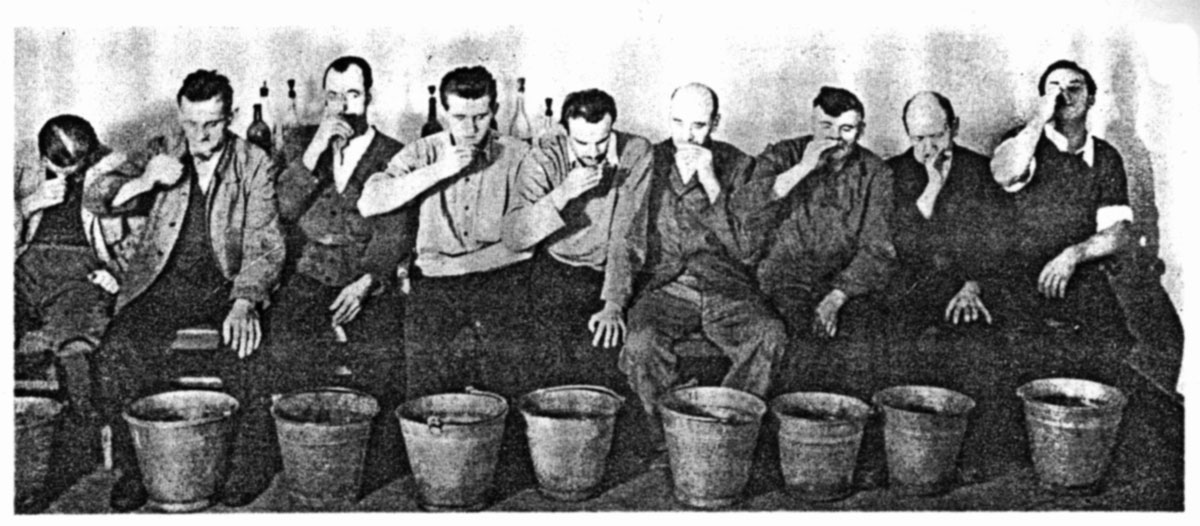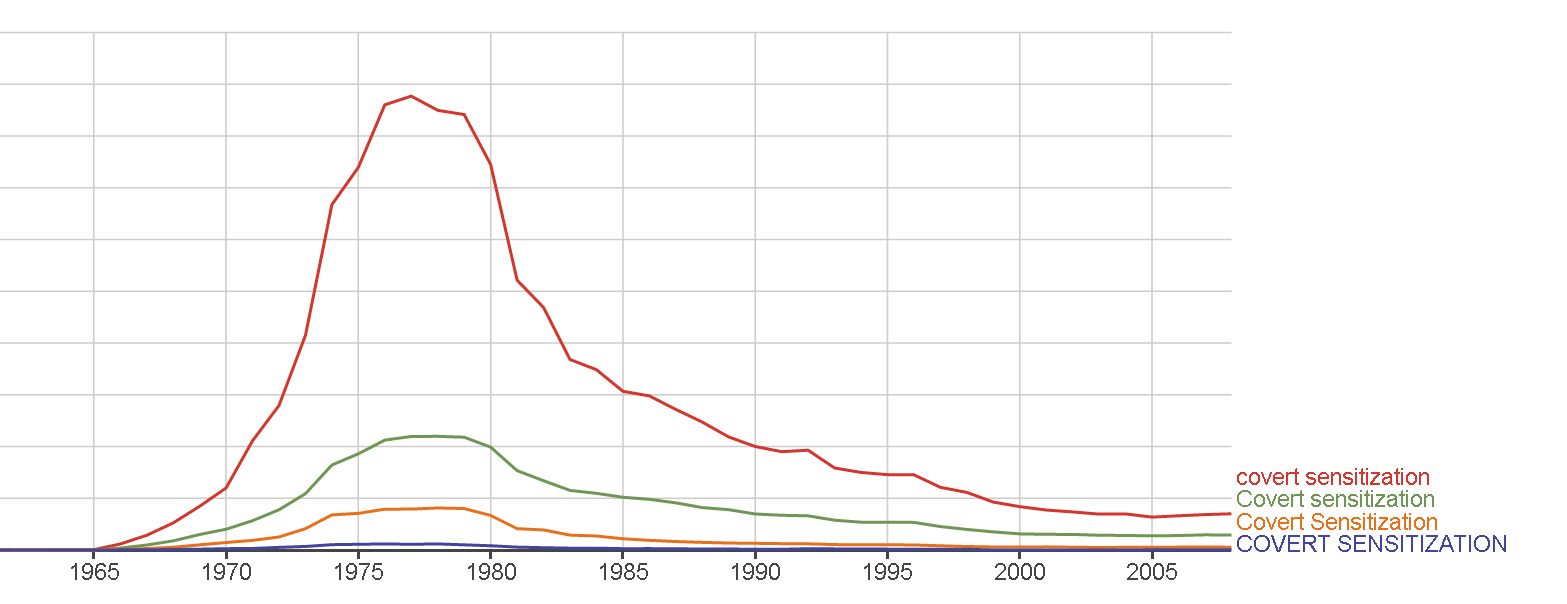Copyright © 2007-2018 Russ Dewey
Sensitization
The opposite of desensitization is sensitization. While desensitization is an extinction process, sensitization is an acquisition process, training someone to react more to a stimulus.
What is sensitization, as opposed to desensitization?
While exposure therapies are used to eliminate fears and anxieties, sensitization is used to establish a normal or desired behavior through classical conditioning. (Operant conditioning can also be used to encourage behaviors through positive reinforcement or incentives.)
An early behavior therapy based on sensitization was the bedwetting therapy devised by O. Hobart Mowrer in the 1930s. He attempted to combat bedwetting or enuresis (en-ur-EE-sis) by providing children with a bed pad sensitive to moisture.
When the child urinated, a loud buzzer was set off. After a few repetitions, the feeling of a full bladder (an internal stimulus) would lead to anticipatory awakening, so the child could make it to the bathroom.
What was Mowrer's bedwetting treatment?
This device became a commercial success and helped many children stop wetting their beds. The success rate was said to be about 50% with parents serving as therapists, but that was enough to make it a steady seller through the years.
Another common application of sensitization therapy is in marriage counseling, for treating lack of desire. Sexual arousal is a biological response, instinctive and reflex-oriented, so it is a good candidate for classical conditioning.
Research we summarized in Chapter 5 shows that sex hormones respond to classical conditioning. To restore sexual anticipation, couples are encouraged to deliberately place significant stimuli before enjoyable sexual experiences.
How is sensitization used to rekindle romance in a marriage?
A sex therapist may begin by having a couple abstain from sex for a period of time while working on improved communication. The next step is to encourage physical contact, but of a non-
Then the couple may be encouraged to start "dating" again. This involves planning a romantic evening together ahead of time.
The couple is urged to set the mood properly in whatever way they prefer: mood music, dim lighting, dinner together...whatever works. This generates cues or signals that will be associated with sexual response.
If one thing leads to another, and the outcome is good, then a positive type of classical conditioning is established. The romantic cues (a romantic dinner, a massage, favorite music) start to generate a biological warm-up effect.
The body quickly learns, on unconscious as well as conscious levels, what cues predict a powerful, positive emotional experience. The romance in a marriage is rekindled.
Covert Sensitization
Covert sensitization is a form of sensitization in which the conditioning process occurs in imagination, out of sight (therefore covert rather than overt). It has not actually been very successful, showing that behavior therapies are not automatically blockbuster successes.
Suppose an alcoholic wishes to give up drinking. One approach is to attempt to establish a negative emotional response to thoughts of drinking. This can be done, in theory, by following thoughts of drinking with anxiety-arousing or disgusting thoughts. Here is an excerpt from covert sensitization treatment by Cautela (1967, pp. 461-462):
What is the goal of covert sensitization? What was Cautela's procedure?
You are walking into a bar. You decide to have a glass of beer. You are now walking toward the bar. As you are approaching the bar you have a funny feeling in the pit of your stomach. Your stomach feels all queasy and nauseous.
Some liquid comes up your throat and it is very sour. You try to swallow it back down, but as you do this, food particles start coming up your throat to your mouth... [The description continues and becomes more vivid and awful.]
...You turn away from the beer and immediately you start to feel better. As you run out of the barroom, you start to feel better and better. When you get out into the clean, fresh air you feel wonderful. You go home and clean yourself up.

Alcoholics in the Soviet Union take a nausea-inducing drug mixed with liquor
Overt sensitization treatments using nausea-inducing drugs, not just imagination, were tried in the Soviet Union as early as the 1930s. A Soviet psychology text from the 1930s shows a line of men sitting on little stools, each with a metal bucket between his knees, each drinking something out of a shot glass.
They were drinking liquor mixed with a drug that would quickly make them vomit. This was supposed to condition them against drinking.
The movie A Clockwork Orange featured a sensitization treatment (not covert) much like the Soviet anti-
To turn him against violence, the convict received a nausea-inducing drug while being forced to watch films of violence with his eyelids taped open. Meanwhile (for some reason) the music of Beethoven was played in his ears. After being released, the young man became very ill whenever he initiated a violent act or heard Beethoven's music.
What "treatment" was used in the movie A Clockwork Orange? Why would it probably not work?
The caricature of sensitization therapy in A Clockwork Orange alarmed the public and added to public distrust of conditioning techniques. In reality, it is unlikely such a technique would work.
An individual forced to watch violent movies while becoming nauseated from a drug would blame the sickness on the drug, not the content of the movie. In general, animals do not associate sickness with sights or sounds, they associate sickness with taste.
Taste aversion is a powerful form of conditioning: rapid and long-lasting. However, the procedure in A Clockwork Orange involved visual stimuli, which are not so easily associated with illness.
Several commercial products attempt to harness the power of taste aversion in order to eliminate addictions. Antabuse is a pill for people who wish to weaken their desire for alcohol. It causes nausea if a person drinks. In theory, this could help a person develop an aversion to drinking.
Bantron is a similar product for people who smoke cigarettes. It makes cigarettes taste sickeningly awful, which (in theory) helps a person stop desiring cigarettes.
How do the commercial preparations Antabuse and Bantron work?
Unfortunately, theory does not always translate successfully into practice. Addiction is one of the strongest motivational forces. Opposing it with taste aversion is not a magic solution.
In fact, aversion therapy does not work as well as more traditional approaches such as peer group therapies. Aversion techniques have another disadvantage: they are unpleasant! Except for Antabuse–which plays a useful role in alcoholism treatment programs–behavior therapists do not usually use covert sensitization or similar techniques.
A visit to Google's source of objective data about the popularity of words and phrases, the ngram viewer, shows the phrase covert sensitization peaked about ten years after Cautela published his article in 1967.

Data from Google's ngram viewer shows that covert sensitization enjoyed only brief interest.
A few other researchers and therapists tried the technique, but it was not a big success. Now it is seldom mentioned in the literature scanned by Google.
Write to Dr. Dewey at psywww@gmail.com.
Don't see what you need? Psych Web has over 1,000 pages, so it may be elsewhere on the site. Do a site-specific Google search using the box below.
